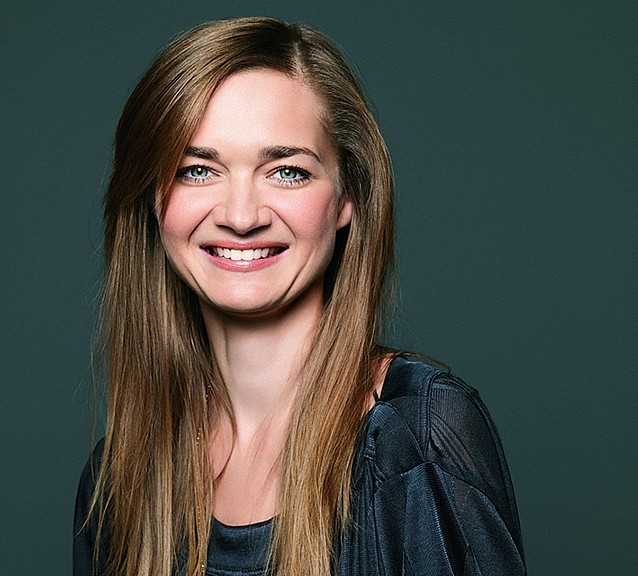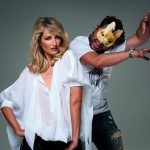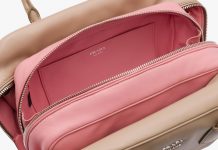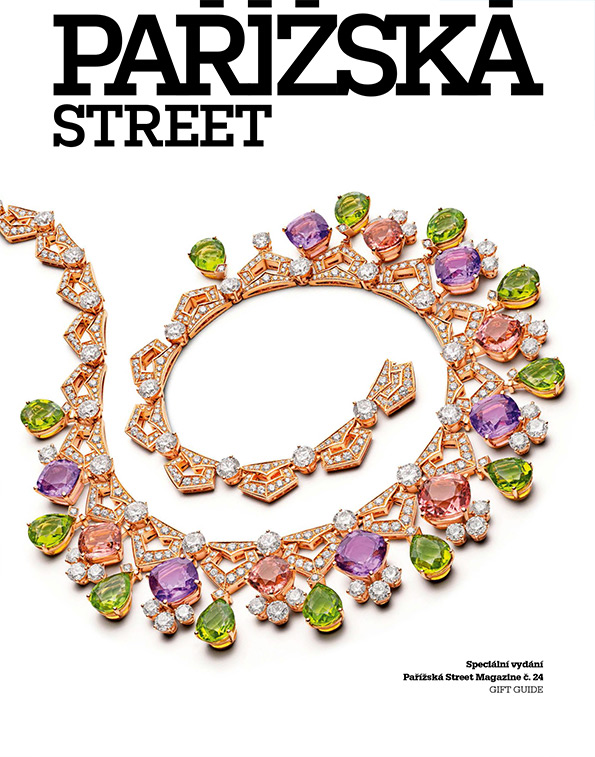She is one of the most talented Czech designers. Her models are ready-to-wear, i.e. outfits that can be worn for day-to-day life. Her new collection also bears this spirit. Read on for more about the early days in Paris, winter clothing and fashion in Bohemia.
She wore a blue wool sweater, light-blue jeans, grey suede ankle boots and a white T-shirt with a print of a girl on a target. She doesn’t go for outlandish clothes, make-up or behaviour so that everyone notices her. Yet I couldn’t shake the feeling that for the entire time she was the centre of attention, during the interview she met two friends, she got a beautiful book from someone, she gradually sipped three fresh tangerine juices and answered many of my questions. In such a short time she managed to get lots of things done. She is used to getting lots done in a short while. She looked at me with her big blue eyes. “I’m enjoying work!”
You recently introduced your latest collection; it was another cooperation with Tereza Maxová. When did you meet? What’s your connection?
Tereza Maxová has been our icon for a long time. We’ve known each other for years, ever since we were starting out in France. So above all we’re friends. In 2000 we shot the first collection. There was a time when we shot everything with Tereza, but due to time constraints it wasn’t so regular, because she doesn’t live in the Czech Republic. But now we got together again after two years. The photographer Goran Tačevski also took part along withthe make-up artist Renata Zelinková , hair-stylist Marek Patl, who was also a “model”, and my son Natanalso has one shot (author of the T-short prints in the autumn/winter 2014 – 15 collection – Ed.). Our old team met up and we really enjoyed the photo shoot.
You are a well-known proponent of ready-to-wear fashion, how does that translate into the size of the clothes? And what about the models that present your outfits at the shows?
The show collection is in size 36. It’s French numbering, so it’s slightly smaller than the Czech 36. But we make sizes 36 – 40 for sale. Apart from this we also sew the models from the collection to fit the customers.To be honest, I don’t like girls that are too thin, because my clothes are worn by real women, who are a bit older than sixteen. The thinner the model at the show, the worse it is for women in the shops to imagine the items on themselves. When I see that the girls are too thin and a 36 is too big for them, then it is clear that it is not for us.
There was a textile trade fair in Paris this September where you were also represented. You also lived there for a while, how did it change your outlook on fashion?
When I finished the secondary school of fashion, my husband and I thought about what next and France seemed to be the best idea, so we set off for there. It took about a year and a half for us to find our feet. Two years for us to learn the language.I was self-taught, I picked up words in shops, on the street, from TVor from my first job. In Paris I saw the exact formula for how fashion ought to work and it really helped me. The main thing I took from it was that it doesn’t belong to a frame. Fashion has two basic criteria: originality and utility. That’s what I try to achieve.
Do you feel at home there?
Yes, I still feel at home there, but I’m really at home in Prague.
Is France, and Paris in particular, still a fashion superpower? If not, what has changed?
There are places and shops that bring a spirit of fashion to Paris’s streets, but by and large Paris isn’t the only one. Other cities such as Milan, London or NY are just as important for fashion. Lately Asia too has become part of the fashion world. In the last fifteen years it has changed so much. There are various reasons for this. One of them is that the large fashion chains have arrived; they can very quickly copy what was on the catwalks and put them in their shops. On the other hand, I say that it’s actually good in a way, because thanks to this, every big brand or designer has a clearly legible styleand people have learned what it looks like.
Moreover designers often cooperate with them directly. Do you have any personal experience with this too?
I did five exclusivecollections for Pietro Filipi, thanks to which I was approached by other designers and the co-operation rocketed from there. For sure some of our customers also buy at the fashion chains, but we’ve got many clients that know that we sew models in limited numbers and this is crucial for them. They are fond of originality.
How do you see the shift in fashion here? How are we doing compared to states such as Italy, America, or France?
If you ask me, you can’t really say that Italy or France are better off. Every state has a slightly different style. You can recognise an Italian at first glance, which is how it should be. In America, where people are truly individuals, it is a custom to experiment a lot and not look at the others. I remember that in the spring in New York I met a woman who had flip-flops and a down jacket on, another had knee-high boots and a summer dress and no one thought it was at all odd, and I haven’t even mentioned the fashion district in Tokyo. Is it different here, where we are always worried about what others will think of us? Czechs are still too guarded, they spend too much time thinking about it and lose that individuality. How many times is it better to instinctively throw on some clothing rather than spend half a day thinking about it.
What materials are your favourite to work with? Do you sometimes get tempted to use something eccentric, to experiment a bit?
I prefer natural materials, such as wool, cotton, silk or linen. I don’t mind when they are mixed, but it must be nice to the touch and pleasant when worn. When a material is well-made, then it has even better properties for maintenance and wearability. In the last collection, for instance, I used imitation leather with all the typical imperfections on the surface, so it looks like real leather. Every designer has their own style, and is into something different, they are inspired by different things, impulses …sometimes, when I see a new material, I ask myself – is it Klára or not?
What should be in every woman’s wardrobe this winter?
A good quality coat is a must for every winter. But definitely a lightweight version. Ideally without a lining, from doubled wool. It adds simplicity and it’s warm. You can’t go wrong by going for black or a darker pastel. I’d also throw in a white shirt or blouse. In the spirit of simplicity and lightness, which you can use during the day, but also in society. “Elasticated” leather boots above the knees á la leggings are still in. Accessories are an integral part of it, be they purses or jewellery.
Designers very often wear something that is typical for them, often eccentric, so they can be identified. What’s your uniform for work?
I mostly wear my clothes. My own designs. At the same time it is also a good test, because when the clients ask me I can tell them about my experiences. My uniform is trousers, which I wear almost all year round. I like to wear jeans a lot. Whether from my own collections or those that I buy when running round the city. To go with it I wear a silk blouse or a T-top with one of my prints. Something like today.
Let’s go on to the future. What is your son doing? Do you want him to follow in your footsteps and start moving in the fashion industry?
Actually he’s already going down that path, though it’s unplanned. He draws a lot and designed something for this year’s collection ‘Monster – letters’, which together make up the word KLARA. We used them to print the T-shirts and for the opening slogan to the season. Apart from that he goes to dance and theatre clubs. When he was about six years old he brought a paper briefcase with figures in it to a friend’s wedding and spent the evening walking around the guests putting on a show for them.

















